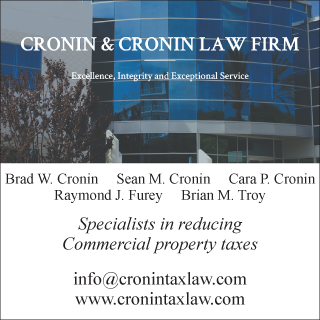Commercial Classroom: Lease protections for landlords, tenants, and broker - by Edward Smith, Jr.

This column is offered to help educate agents new to commercial and investment brokerage and serve as a review of basics for existing practitioners.
We still have an unsettled market and safeguards have to be built into leases to address all situations.
Percentage Leases Concerns
They can be set up in three different ways.
Many retailers consider the calendar year as if they bought all of their inventory at the beginning of the year but do not realize their profit until the end of the year. In this case they pay a defined rent each month, but when their cumulative sales reach a certain dollar amount, they pay a percentage of their sales each month in addition to the base rent. This continues to the end of the calendar year and then the cycle starts all over again.
The “natural breakeven” is the point in sales the retailer must reach before a percentage of sales must be paid to the landlord as additional rent. This is determined using the following formula: Annual rent ÷ percentage of sales = natural breakeven point.
As an example, the rent is $5,000 a month; $60,000 a year (annual rent) and a 5% percentage of sales is negotiated: $60,000 ÷ 5% = $1,200,000. When the store’s sales reach $1,200,000 the tenant will continue to pay the base monthly rent plus 5% of that month’s sales as additional rent.
The second way, which is common with mall tenants or larger shopping centers is the tenant’s rent is based on a negotiated dollar per square foot plus a percentage of their sales throughout the entire year. Your rent is based on $35 per s/f plus 3% of your sales payable monthly.
The other method is where the tenant only pays a percentage of their sales each month.
In the first method landlords generally have sufficient base rent for their revenue expectations and the percentage of sales in the second half of the year is additional revenue to them.
In the other two methods, especially the later, landlords need to protect themselves. They will carefully exam the tenants past sales history and current expectations in considering giving them a percentage lease; as the landlords income is based on that sales revenue.
In these cases, the landlord considers the worst-case scenario. What if something unforeseen happens and the tenant’s sale volume declines. They are then not collecting the revenue they need.
Often with a percentage lease the landlord will insist on a recapture provision in the lease, to protect themselves. Recapture provision give landlords the right to take back all or a portion of their property, by terminating all or part of a lease.
It may be triggered if a tenant does not maintain a specific minimum amount of business; reducing the landlords anticipated revenue. A poorly performing retail shop can affect the entire shopping centers image and the businesses of all the other tenants, reducing the landlords income even further. Recapture allows a landlord to remove
an underperforming retail store, opening the space for a more profitable business.
The recapture provision may also be triggered when a tenant wishes to sublease or assign some or all of their space. Market conditions may have changed, and the landlord could rent the space for more money by exercising their recapture rights and taking back control of the property.
The recapture clause also protects the landlord in an instance where the tenant attempts to sublease the property for a profit.
Tenants need protection too!
What if the “anchor” store closes or if several stores in a shopping center close? This reduces the number of people coming to the center and consequently reduces the other stores’ sales.
In these cases, tenants need co-tenancy clauses in their leases. co-tenancy clauses can take many forms but give relief to the remaining tenants. The rent may be automatically reduced to a predetermined level, rent may be changed to a percentage of sales. Tenant may terminate the lease if the anchor or other vacant stores are not rented within a certain period of time, or if the replacement tenants’ business no longer “feed” the tenants business.
Sometimes a landlord has a large amount of space available and rents a portion of it to a tenant. Then another tenant is interested in taking the entire space. As an example, in an office building an entire floor (30,000 s/f) is vacated. The market is difficult, and the space has been empty for too long. A tenant wants to rent 7,500 s/f and the landlord agrees to do so. They move in; but the landlord would prefer a single tenant for the entire floor. The landlord has a clause added to the lease relocation rights. This grants the landlord the option to relocate the existing tenant to another space in the building.
As you can imagine relocation is highly disruptive to the tenants. In this case if relocation rights are required, the tenant needs to protect themselves by negotiating several things. Landlord to pay for all moving expenses and necessary tenant Improvements. Rent to be abated during the relocation period. That the replacement premises should be
equal to or superior to the original space. Also, to allow the tenant to terminate the lease in lieu of relocation.
Brokers also need protection.
Lease commissions are based on all the financial gain the landlord receives from the tenant, that the broker placed in the building. The rent the landlord receives each year of the lease including the escalations is added together and multiplied by the negotiated commission rate to determine the commission fee.
A lease has an initial term of 10 years and an option to renew for an additional 10 years. The broker is paid a commission for the initial term on lease signing. The owner sells the building after five years. After the initial term the tenant exercises their right to stay in the building for an additional 10 years.
Normally, a broker would be entitled to an additional commission from the original owner at the time of renewal (provided your paperwork states so). But now the building has a new owner, would they be required to pay a commission to the broker when the tenant exercises their right to renew? No! The broker has no contractual agreement with the new owner. Their listing agreement and commission agreement were with the old owner.
To protect the broker, those documents must contain an assumption agreement. Stating that if the current owner sells the building, they will require the buyer to sign an assumption agreement (in recordable form) whereby the new owner assume the liability to pay the broker any future commissions that may come due.
Some lease agreements are written only for the initial term of the lease and do not consider the future. To protect possible future commissions, brokers should add to their listing and commission agreements the following. That if the tenant they placed in the building decides to extend or renew their lease or buy the building the owner will owe the broker an additional commission and what rate that will be based on.
The broker of record and the agent involved should be stated in every lease. This provides additional protection should they have to go to court to collect a commission fee.
Edward Smith. Jr. CREI, ITI, CIC, GREEN. MICP, CNE, e-PRO and CIREC program developer, is a commercial and investment real estate instructor, author, licensed real estate broker, speaker, and a consultant to the trade.
Suffolk County IDA supports expansion of A&Z Pharmaceuticals


The evolving relationship of environmental consultants and the lending community - by Chuck Merritt
When Environmental Site Assessments (ESA) were first part of commercial real estate risk management, it was the lenders driving this requirement. When a borrower wanted a loan on a property, banks would utilize a list of “Approved Consultants” to order the report on both refinances and purchases.








.gif)
.jpg)